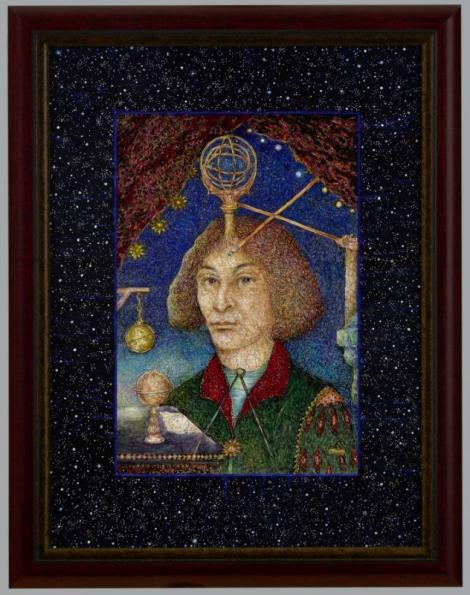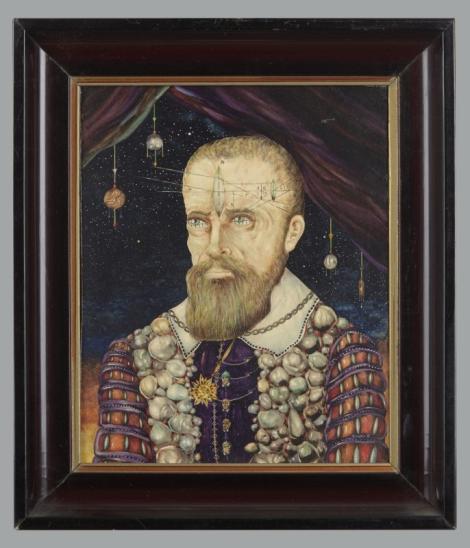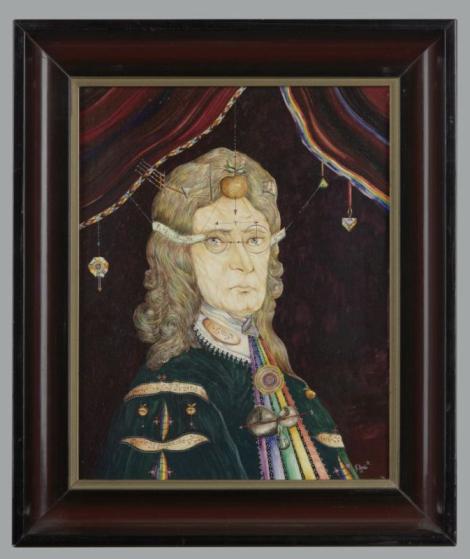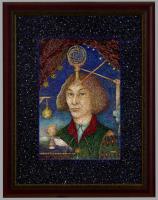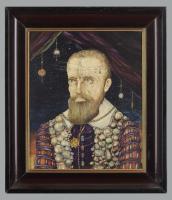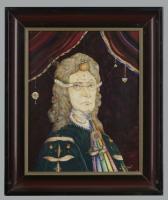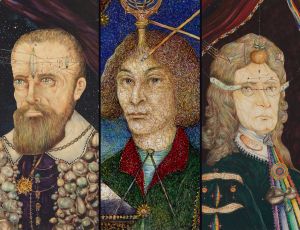
Exhibit of the Month is a series initiated by the Jagiellonian University Museum with the beginning of the new academic year. Each month we will explain the Museum collection to you, choosing a single exhibit or a group of exhibits which usually are not shown to the open public. This month's feature are three portraits of Copernicus, Galileo and Newton painted by Władysław Szyszko. Open the article to read the full text.
The current exhibit of the month in December is also the exhibit of the… Copernican Year. The end of the year is a time of recollection. The Copernican Year 2023 is about to end. Joining the celebration of the 550th birth anniversary of the great Astronomer, the Jagiellonian University Museum was participating in various events on all levels of its activity. The crowning moment is undoubtedly the new portrait of Nicholaus Copernicus commissioned by the Museum management from Władysław Szyszko
WHO IS WŁADYSŁAW SZYSZKO?
A simple answer to that question would be “a Cracow visual artist” but a more poetic and also precise phrasing would be “a happy man”. Because he is engaged in what he dreamed of as a child, because he has created his unique style and gained recognition for it, because he will leave behind the fruits of his passion for life, so he "shall not wholly die”... In a word, he is an accomplished artist.
He was born on 2 January 1944 in a picturesque house standing on the corner of Mikołajska and Św. Krzyża streets. He is a native of Kraków by birth but also by choice. He admits that he feels best in Kraków, loves its history and monuments, and draws inspiration from everything that surrounds him there.
His life path has brought him to the Collegium Maius. He entered his dream studies at the Jagiellonian University — Mediterranean Archaeology at the Faculty of Philosophy and History. He attended lectures held by prominent professors: Karol Estreicher jr., Adam Bochnak, Lech Kalinowski, and they were held in the Collegium Maius at the time! Moreover, as a student of archaeology, he spent a month of internship there. Szyszko graduated in 1966.
This was not the end of Władysław Szyszko's education. He studied at the Faculty of Art Conservation of the Academy of Fine Arts in Kraków. He studied painting in the atelier of Professor Adam Marczyński and obtained his second diploma in 1971.
The output of Władysław Szyszko also includes scientific publications on ancient Egyptian and Greek monuments. He is the author of many solo exhibitions at home and abroad. His works have been presented at nearly 100 collective exhibitions.
SZYSZKO AND HIS ART. AN INIMITABLE STYLE
What makes Szyszko's paintings distinct and what is his style? It is characterised by precision of line, richness of colours and shapes, and attention to detail. The painter is a miniaturist. A lot can be expressed in a small format. His “little pictures”, as he calls them, are full of meaningful elements that add up to an interesting story about the character depicted. We can “read” them like a page in a book. The artist creates a fabulous, colourful, often funny and even surprising world. Both in life and art, he shows his propensity for humour. His paintings belong to the genre of fantastic realism. Imagination, the licentia poetica plays an important role here. The artist expresses himself. By looking at a work of art, we also learn about the man who created it.
HISTORY
More than 40 years ago, Władysław Szyszka was visited at his family home in Mikołajska Street by two gentlemen: Professor Stanisław Waltoś, then director of the Jagiellonian University Museum, and its deputy director Kazimierz Nowacki. They commissioned from him portraits of Galileo and Isaac Newton for the Collegium Maius collection. They wanted to have images of these great scientists in the inimitable style of Władysław Szyszko. The result was fanciful portraits of small sizes with rich colours, filled with meaningful details.
Portrait of Isaac Newton (1980) — the proverbial apple on the scientist’s head inspired him to formulate the law of universal gravity. Various mathematical formulas are scattered across the unreal robes while the magnificent original jabot actually represents the splitting of light.
Portrait of Galileo Galilei (1981) — there is a large lens on the scientist's forehead that allowed astronomical observations through a telescope. With it, the Italian scientist made many interesting discoveries, eventually establishing that the Sun was at the centre of the solar system. A small sun can be seen on Galileo's chest. Against the backdrop of a starry sky — spheres of various sizes with markings showing the direction of fall allude to his experiments on the free fall of bodies. The plight of the scientist, who spent the last years of his life under house arrest, is symbolised by the stones with which his fancy dress is covered. If we look closely into Galileo's eyes, we notice...prison bars!
PRESENT DAY
The tradition has been fulfilled. A few months ago, the current Director of the Jagiellonian University Museum, Professor Krzysztof Stopka, and Deputy Director Joanna Ślaga commissioned a portrait of Nicolaus Copernicus from Władysław Szyszko. As expected, the result was an original image of the astronomer in the artist's unique style. A serene face, a fancy coloured outfit featuring a compass. Around the figure, the astronomer's attributes are meticulously depicted: an astrolabe, a triquetrum, and an armillary sphere grows on his head like a tree of wisdom. Over the years, the way the artist paints faces and bodies has changed. He makes artificial craquelures on the skin, a fine mesh of cracks that, like wrinkles, remind us of the passage of time. A certain novelty is also the passe-partout hand-made for the paintings, which complements them in colour, and the wealth of decorative motifs is delightful. In the case of the Copernicus’s portrait, of course, it is the dark sky dotted with tiny stars.
After more than 40 years, Władysław Szyszko has completed his “triptych” for the Collegium Maius. There are differences between the portrait of Copernicus and the depictions of Newton and Galileo, but it is obvious that it is a cycle, they are painted following the same 'canon'. The human figure is presented in a rich context, it is accompanied by various significant elements, there is a lot going on at the figure's head, because the head is the most
important thing, that is where thought begins. In all the portraits there is a beautiful curtain, which perhaps symbolises the fact that each of these giants revealed different secrets of the universe.
There can be no doubt that Newton and Galileo are glad to welcome Copernicus among themselves. Tres faciunt collegium (Latin: “Three people make a company”). Now they can begin a scientific discussion.
Desisława Christozowa-Gurgul
Museum Assistant


